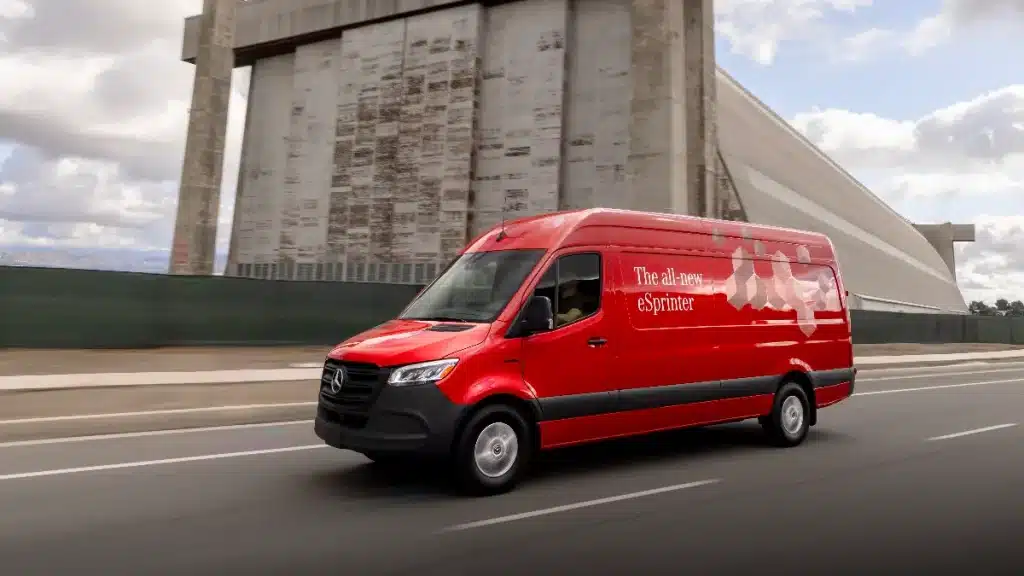
Electricifying the grand daddy of the big van world is no mean feat, so the Mercedes eSprinter range has to match the colossal abilities of this powerhouse of a van.
The Merc eSprinter is one of the most important vans for both fleets and owner drivers, so it's likely to be a popular choice when it comes to people going electric, but you need to know what the large electric van is capable of doing.
Whether you're using the eSprinter for parcel deliveries as a courier, or you're using it as a tradesman carrying building materials or equipment, knowing that the big van is going to be able to get you to and from your destination or around your route is really important. In this guide we'll cover off all the important points you need to know whether you're a current eSprinter owner or if you're looking to buy a new van or even a used one.
This guide will look not only the Mercedes-Benz eSprinter's range, but also the eSprinter battery sizes and choices, and the all important charging times that will help you juice up quickly and get back on the road.
Like its diesel sibling, the eSprinter's range is designed to be highly flexible, which is why it is available at several different van weights and in a range of body styles. It's also why Mercedes decided to give buyers a choice of battery.
Up to this point, most electric vans had come with one power output and one battery choice. Mercedes changed all that with their eSprinter.
First generation (2020): Two battery choices were available, a 41kWh battery with a claimed range of 70 miles, and a 55kWh battery with a 96 mile range on the WLTP cycle.
Second generation (2024): Two battery options increased to 81 kWh with a WLTP-rated range of up to 161 miles (259 km) and a larger 113 kWh battery only available in the 4.25-tonne GVW van with a WLTP range of up to 272 miles (438 km).

The eSprinter is available with a choice of two battery capacities, allowing buyers to select a configuration that best fits their operational requirements and budget.
The eSprinter is available with both AC and DC charging options. However, over time the charging speeds have improved dramatically.
First generation: Early vans were only capable of AC charging at 7kW or with a faster 20kW DC charger as standard. That meant that an 80% charge would take around two hours, or up to eight hours to charge the 55kWh battery and six hours for the smaller 41kWh battery on a domestic power supply. An optional faster DC charger was later offered which increased the charging speed to 80kW and lowered the charging time to 80% to just 30 minutes.
Second generation: Bigger batteries meant faster chanrging speeds.
AC Charging: The AC rate increased to 9.6kW enabling a full 0-100% charge for the 81 kWh battery in around 10 hours, while the 113 kWh battery takes about 12.5 hours.
DC Fast Charging: The eSprinter van supports a peak DC fast charging rate of up to 115 kW, with the 81 kWh battery going from 10-80% in around 32 minutes, and the larger 113 kWh battery from 10-80% in approximately 42 minutes.